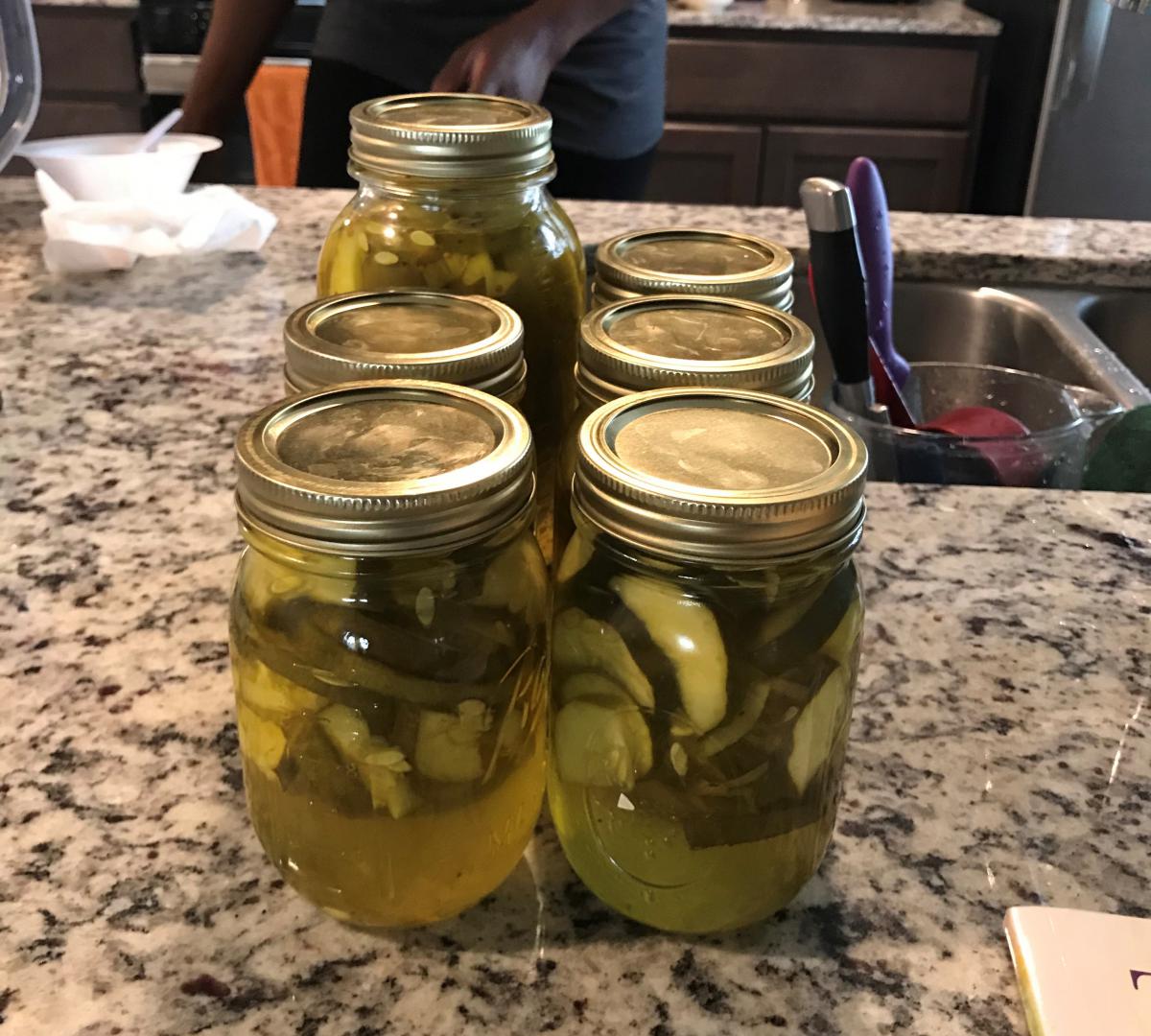
Ja Nelle Pleasure relies on her garden for fresh fruits and vegetables. "Vegetables are expensive at the grocery store," she says. (DANA CRONIN/HARVEST PUBLIC MEDIA)
Ja Nelle Pleasure never used to think twice about putting food on the table for her family.
In fact, the Pleasure family revolved around food. One of their favorite activities was to spin a globe, put a finger down and cook a dish from the country where it lands.
“It was a lot of fun because we got to eat all over the place, stuff that none of us would have dared try before, like silkworms,” she says. “They really look disgusting and scary… But when you eat it, it tastes like popcorn.”
They haven’t done that since the start of the pandemic when Pleasure lost her job.
“There's not a belt to tighten there. There's no wiggle room here,” she says. “I'm unemployed, and there are limited things that I can do.”
This is increasingly becoming the reality for millions of Americans, and people of color are much worse off. According to July data from the Census Bureau, nearly 25% of white families with children reported struggling to afford food. Meanwhile, nearly 40% of Black families with children reported food insecurity. Those numbers are more than double what they were pre-pandemic.
For Pleasure, the struggle to afford food isn’t new. She suffered a stroke two years ago, and focusing on her career as an artist became increasingly difficult. When her husband left soon after that, she was left with a single stream of income to feed her three kids - now 16, 14, and 10 years old.
“You don't plan for things like that to happen in your life,” she says. “So for me, it really pulled the rug from under me, and I didn't know what to do."

The pandemic, she says, has made things worse. Almost immediately, she lost the remaining income she was earning as an artist. Meanwhile, when schools shut down, her kids lost access to school meals.
She currently receives $125 per month through Pandemic-EBT, a federally funded program for families whose children qualify for free or reduced-price meals when school is in session.
“The $125, literally, I can spend in like a week, because my kids eat like grown men, like a football team. I don’t know where they put it,” she says.

Pleasure doesn’t waste anything. Her kitchen counter is lined with jars of pickled vegetables from the garden, and her freezer is stacked with leftovers. She calls herself a “coupon queen,” and whenever there’s a good sale at the grocery store, she adds to the stockpile of pantry items lining the walls of her garage.
For fresh fruits and vegetables, the Pleasure family relies upon their garden. Their plot sits on the edge of a community garden near their house, where they grow everything from herbs to leafy greens and strawberries.
“I'm cooking literally every day with something that I've grown,” Pleasure says. “It helped save a lot of money because vegetables are expensive in the grocery store.”
And yet, sometimes it’s not enough. That’s when Pleasure pays a visit to the local food pantry, which she says was difficult at first.
“[I] was very adamant in letting people know, ‘I'm just helping a family. I'm helping a friend,’ when really it was for me and my family,” she says. “I was just very embarrassed and ashamed that I had to go through this.”
At first, she brought her kids to the pantry where they used to volunteer.
“When we actually had to be participants in it, I think maybe there was a little bit of confusion for them. Like, ‘why are we here? Why do we have to do this?’” she says. “So I stopped bringing them, because looking at that and looking at them, it made me feel like less of a parent.”
The Pleasure family is far from alone in the struggle to afford food, and the COVID-19 pandemic has exacerbated the problem for a number of reasons.
“Families make ends meet by being employed. And when there's a big shock to employment, it's not entirely surprising that food insecurity rates go up,” says Diane Schanzenbach, Director of the Institute for Policy Research at Northwestern University.
In August, the unemployment rate among white workers stood at about 7%. For Black workers, it was 13%.
And as unemployment shot up, so did prices at the grocery store, with the highest single-month increase seen in the last 50 years.
Meanwhile, millions of students lost access to school meals once the pandemic set in.
“When that went away, that left holes in families' budgets that were really quite deep,” Schanzenbach says.
This highlights the importance of food benefit programs like the Supplemental Nutrition Assistance Program (SNAP), formerly known as food stamps, says Schanzenbach. It’s also proven that programs like P-EBT, upon which Ja Nelle Pleasure relies, really work. Schanzenbach says increasing funding to these programs is a “no brainer.”

Pleasure says she’s grateful for programs like P-EBT.
“That took a huge weight off my shoulders,” she says. “Now I just have to worry about, will the power be on? As opposed to, power or food? I'd rather my kids eat than have lights. Like, we can get candles. Not a big deal.”
After all, even if it was in the dark, she says she’s always been able to put some kind of food on the table.
Follow Dana on Twitter: @DanaHCronin












